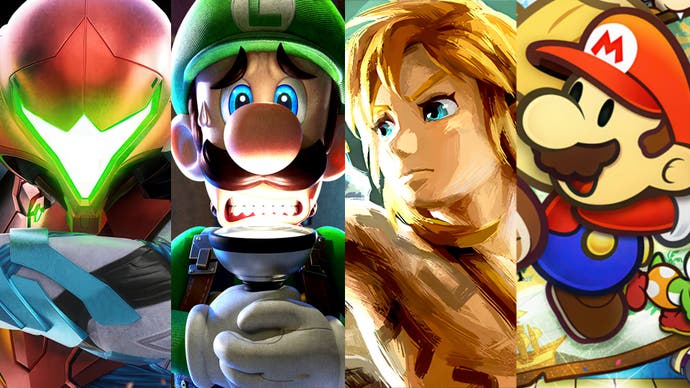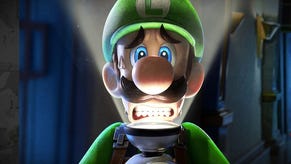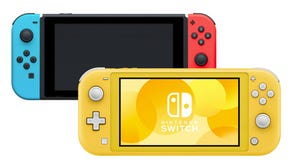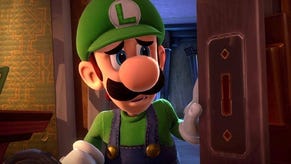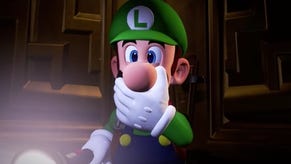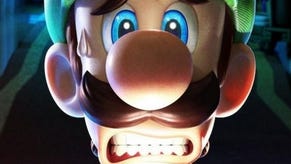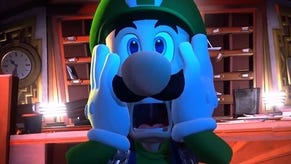Luigi's Mansion 3 is Digital Foundry's pick as Switch's most technically impressive game
A generational retrospective kicks off with a focus on Nintendo first party games.
According to Video Games Chronicle, the Nintendo Switch is the most long-lived of any of the firm's home consoles - judged by the time taken before a replacement hit the shelves. The Nintendo Entertainment System aka Famicom previously held the record at 2,686 days and with Switch 2 still to arrive, the current-gen hybrid continues to power on. Nevertheless, we believe that a reveal for the new machine is mere weeks or at most, a couple of months away and we're starting to look back at the legacy of Nintendo's mighty handheld. In the first of a series of pieces, we're taking stock with our picks for the most technologically impressive Switch titles, beginning with our choices from the first party catalogue.
We're not going to be covering every first party game here and it's a personal selection from John Linneman and Oliver Mackenzie, but in each case we genuinely feel that Nintendo or its development partners have delivered experiences that far exceed expectations. And to a certain extent, those expectations are set by the nature of the Switch hardware itself. It's using the exact same processor as the Shield Android TV - which never acquitted itself well as a games machine - and it's doing it with significantly reduced clock speeds. And let's not forget, we're talking about 2015 technology.
That said, the Nvidia technology - particularly its GPU based on the Maxwell architecture - is capable of great things and while dated now, for its time, the Switch processor's graphics capabilities encompassed all the modern features. The challenge facing developers was all about scalability - reducing resolution, frame-rate and fidelity where needed, tapping into the strengths of the architecture while contending with relatively minuscule levels of memory bandwidth. And these are the games where we feel that select studios absolutely triumphed - and while we aren't ordering them as such, we do have one game that we feel stands alone. Luigi's Mansion 3 may not seem like the most obvious choice - but bear with us as we explain why.
Fast RMX
A launch game from Shin'en Multimedia - a tech-oriented developer with a love for Nintendo systems and roots in the demoscene, Fast RMX is effectively a remaster of Fast Racing Neo on Wii U. Inspired by WipEout and probably the best iteration of the Psygnosis classic, this game surprised us. We went into the Switch generation thinking of the machine as a portable Wii U in terms of its graphical power - but Fast RMX outstripped its Wii U counterpart. Whether in docked or portable play, it operated locked at 60 frames per second, delivering impressive lighting and physically-based materials. Its resolution also outstripped Wii U in spite of the enhancements, running most of the time between 900p and 1080p docked, up against the 720p of its older counterpart. Years on, Fast RMX still holds up today.


Metroid Prime Remastered
Metroid Prime 4: Beyond isn't on this list, because we've not seen anything of it beyond the trailer. However, we suspect that Metroid Prime Remastered is a taster of the technology to come. Indeed, rather than a remaster, some might say this is actually a full graphical remake of the original game. Retro Studios delivers impressive 'baked' (or rather, pre-calculated) lighting working in tandem with physically-based materials - and combined with the increase in overall detail, it's a game that respects the original game's design while modernising it for today's audiences. This release is on par with some of Bluepoint's best remastering work and it's a technological masterclass in getting the most out of the Switch hardware.

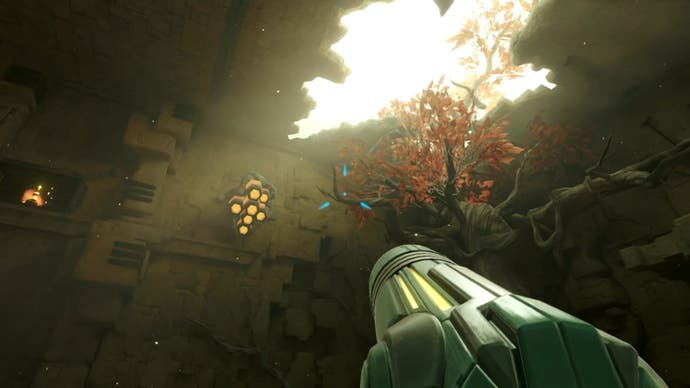
Super Mario Bros. Wonder
While we've enjoyed the New Super Mario Bros. titles from Nintendo, something never quite clicked for us - the animation lacked charm and seemed lifeless. Super Mario Bros. Wonder addresses all of our critiques and oozes style and charisma, with 3D models animated to mimic sprite-based movement, with keyframes carefully chosen to ensure Mario always looks his best. The quality of the background visuals, the imagination and the vibrant design create an unmissable Mario experience - perhaps the best on the system. It's a masterpiece.
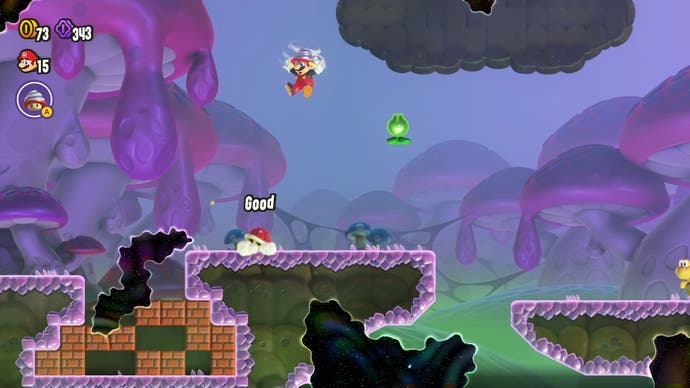
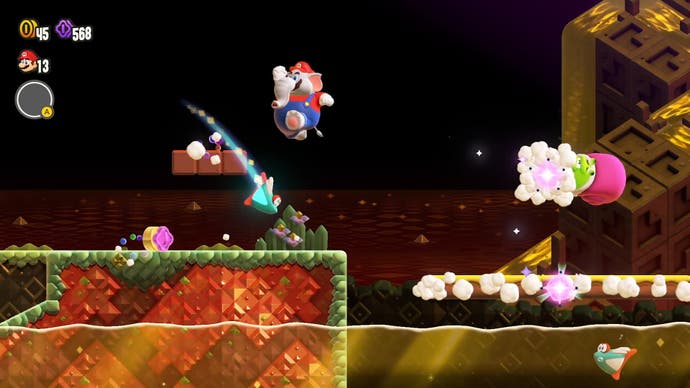
The Touryst
Shin'en Multimedia has released two Nintendo Switch games - and they're both in our list. The Touryst has gone on to achieve considerable success on other platforms (including an 8K 60fps native resolution version on PS5), but it started life as a Switch exclusive. Minecraft-like visuals, built using MagicaVoxel are rendered on Switch using Shin'en's custom engine, with beautiful lighting and superlative detail and animation. The lighting system is dynamic and exceptionally effective, while smart, efficient design means that just like Fast RMX, the download size is tiny: just 200MB. We can't wait to see what Shin'en is cooking up for the Switch's successor.

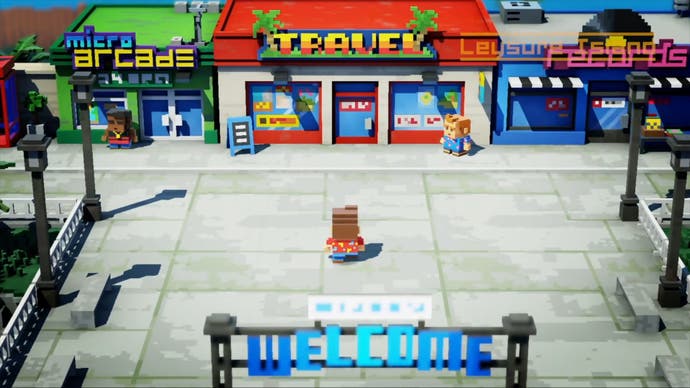
Xenoblade Chronicles 3
Switch's more limited hardware design means that some of the more ambitious game types seen elsewhere are more challenging to deliver on the hybrid - and yet somehow, developer Monolith Soft delivers a graphically impressive, open world game with vast, detailed environments with excellent draw distance and impressive volumetric effects. Only the static shadows during the simulation of a dynamic time of day show any real compromise. When many Nintendo first-party efforts lack any form of anti-aliasing at all, Xenoblade Chronicles 3 is impressive in delivering Unreal Engine-style TAA that works beautifully. Excellent art direction and extreme technical acumen come to the fore in this title.
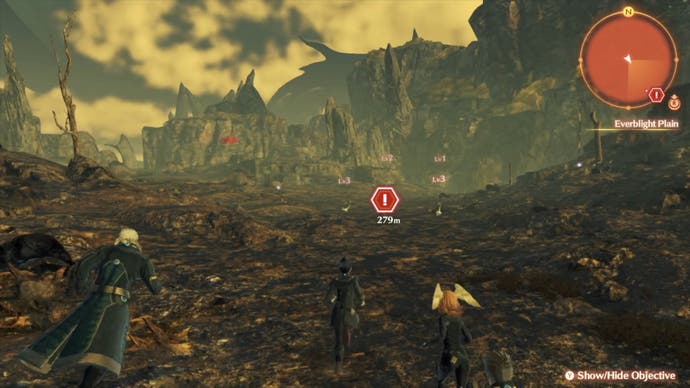

Super Mario RPG
Originally developed for Super NES by Square, Nintendo turned to ArtePiazza for this 3D remake - and it's actually built on the Unity engine, a rarity for first party Switch projects. This game effectively translates the isometric, pseudo-CGI visuals of the original into a well-realised real-time 3D remake, running - for the most part - at a smooth 60 frames per second. Also impressive is how more demanding scenes are actually pre-rendered videos, but the quality of the playback and the matching 60fps frame-rate make them a good fit for the real-time action. This is rare bearing in mind space constraints on Nintendo cartridges. This is another textbook example of excellent art direction, polished tech and smooth performance combining to deliver an excellent remaster/remake.
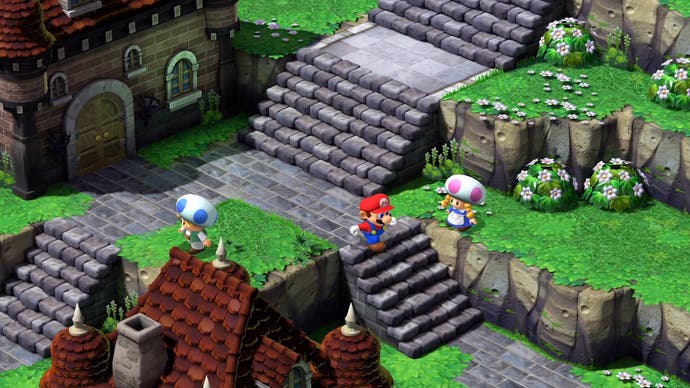

Paper Mario: The Origami King
Nintendo are the masters of creating original, distinct games - and Paper Mario: The Origami King is a stand-out effort, thanks to its uniquely crafted paper look, backed by well-executed global illumination (again, pre-calculated) and exceptional animation that does a great job of giving the impression of crumpled paper in motion. The developers truly go all-in on the origami concept, right down to convincingly mimicking the material qualities of paper, reminiscent of Media Molecule's work on Tearaway. It's only 30fps on Switch, but it's the kind of game where the quality of the visuals holds up so well, it would scale beautifully to other platforms with no real changes to the core artwork.

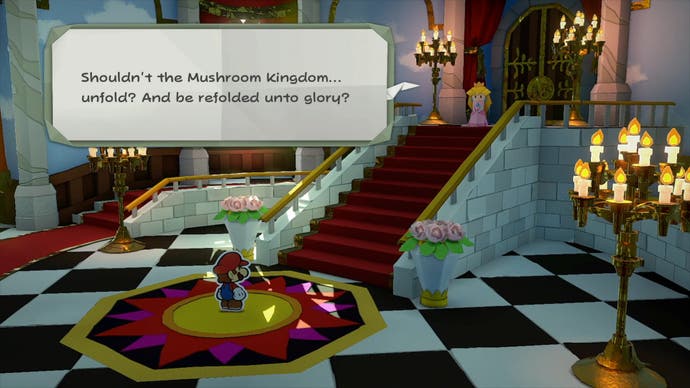
Super Mario Odyssey
One of the first games revealed for Nintendo Switch, but not actually a launch title, Super Mario Odyssey is an early example of Nintendo's standout visual design and character, embued with so much detail and variety in its levels. It's also packed with interesting elements, like 2D gameplay mapped into the 3D environments. The scale of those environments also impressed, especially in terms of detail and extended draw distances. Despite all of that, it's targeting - and mostly achieving - a locked 60 frames per second, marred only by some issues in the challenging New Donk City. There's an interesting performance-saving measure here, where two 640x720 frames combine into one, which works surprisingly well.
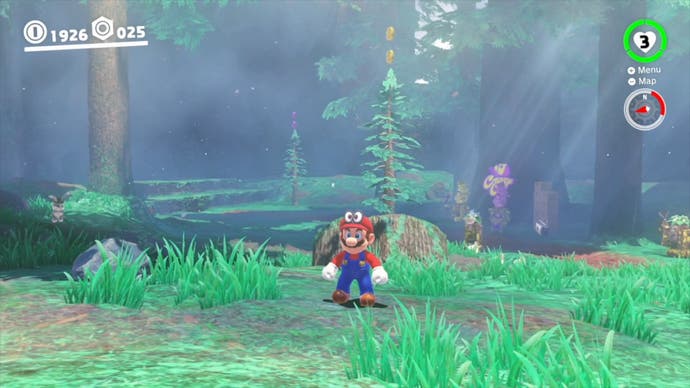
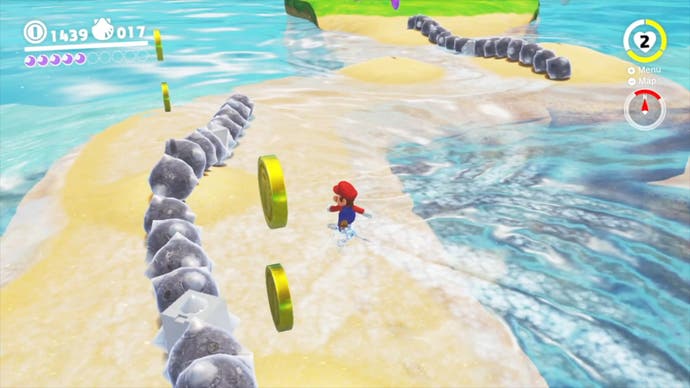
Metroid Dread
While Nintendo's internal studios consistently deliver excellent work, its collaborations with selected partners often yield big dividends. The work of Retro Studios speaks for itself, but Metroid Dread - a collaboration with Castlevania: Lords of Shadow developer Mercury Steam - is also impressive. Rich in detail and endowed with impressive lighting and shadows, Metroid Dread has a fast, energetic feel thanks to fast transitions between areas and fluid animation. Water rendering - a favourite DF technique - is on point here, with geometric animation that creates realistic waves and ripples, while the underwater sections are suitably atmospheric. This is Mercury Steam's best work to date and an excellent title that worked beautifully as an unofficial launch title for the Switch OLED.
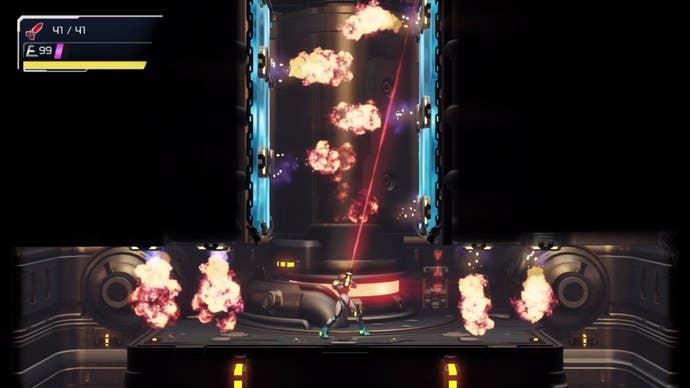

The Legend of Zelda: Breath of the Wild/Tears of the Kingdom
This is an interesting title to include in our line-up, because Tears of the Kingdom's technological credentials should be lauded - but we don't actually believe that this game is upping the ante visually that much over The Legend of Zelda: Breath of the Wild. That's not to say it's not impressive graphically - Nintendo's take on the open world with a cel-shaded aesthetic certainly has its moments. However, really, these Zelda titles create magic through interactive physics systems that encourage experimentation from the player. It's Nintendo's take on the kind of realistic world physics that came to the fore in titles like Crysis and Far Cry 2, but with a much stronger emphasis on player interaction. These games are stone cold classics, marred only by bouts of poor performance and aliasing issues.

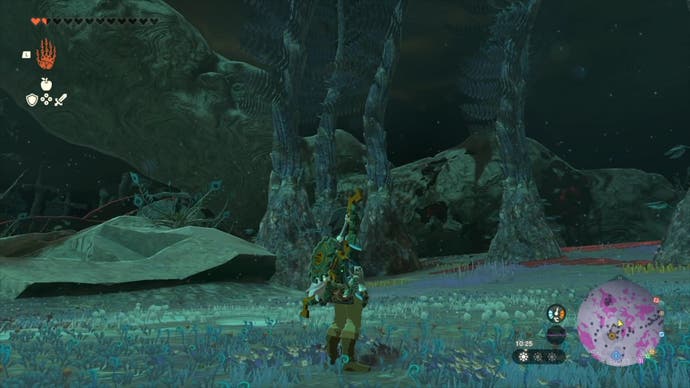
Luigi's Mansion 3
This one might come as a bit of a surprise, but in terms of visual ambition and accomplishment, Luigi's Mansion 3 is phenomenal, delivering something very special that seemingly outstrips the capabilities of the Switch hardware. The game's real-time lighting is brilliant, with impressive shadow-casting flashlights, screen-space ambient occlusion and an excellent approximation of bounce lighting. What Switch is doing here is comparable with the results seen on far more capable platforms. That extends to character rendering too, with skin-shading techniques that compare favourably with CGI movies, while full geometric reflections are rarely seen on any game, let alone a Switch release.
Long term partner studio Next Level Games delivers superb work here, with excellent art design extending to environmental design too, showcasing variety and attention to detail, while the physics system - especially the vacuum cleaner mechanic - is similarly impressive. We'd venture to suggest that the relatively static camera angles give the developer leeway to carefully budget any given scene, but even so, the fact is we're looking at visuals and effects that are rarely seen on Switch, looking great and running smoothly at a pretty consistent 30 frames per second. Maybe this one has passed you by, but if you want to see Nintendo's hardware intelligently deployed with stunning results, we highly recommend Luigi's Mansion 3.
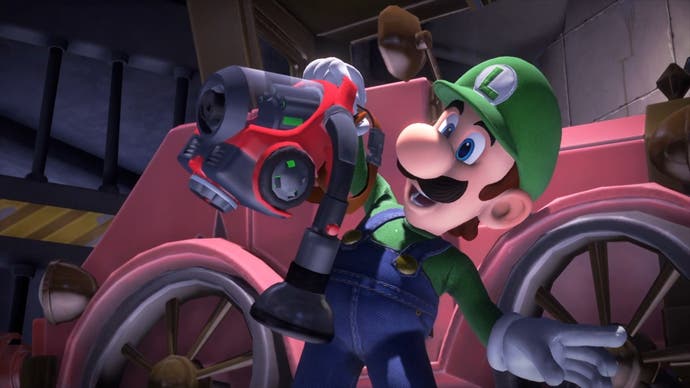
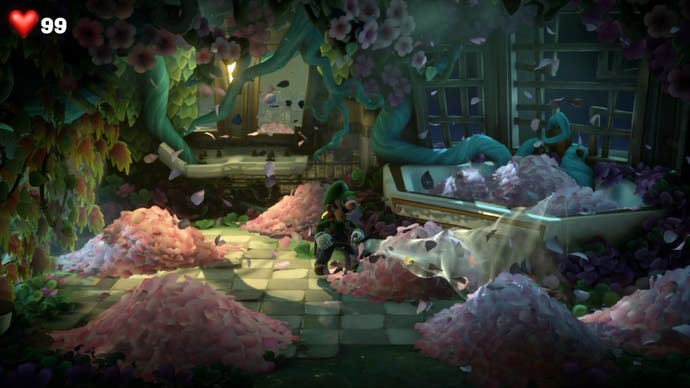
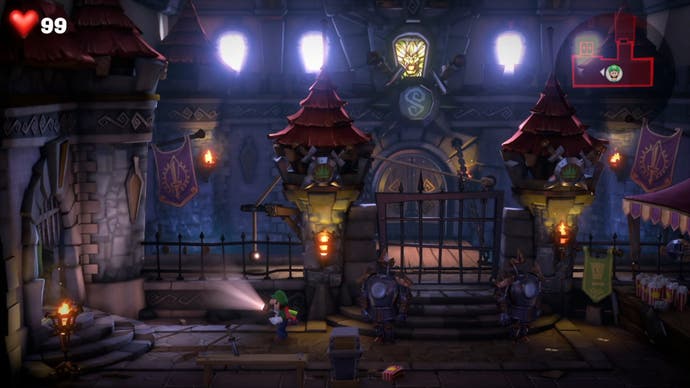
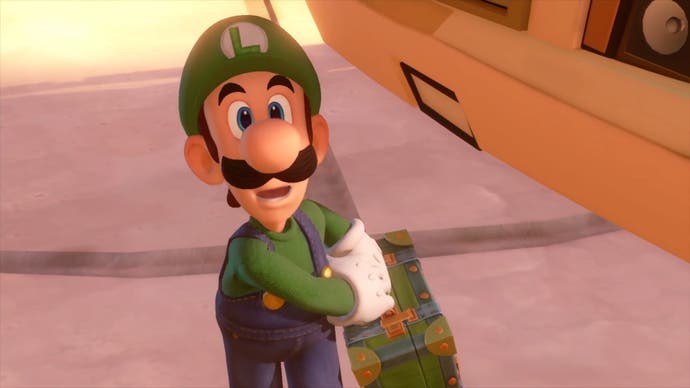
The honourable mentions
In addition to our core selection, three more games were worth including as "honourable mentions", kicking off with the remaster/remake of The Legend of Zelda: Link's Awakening. We love its unique visual style and its tilt-shift look with convincingly plastic toy-like aesthetics - but it's marred by highly intrusive performance problems. That's quite a surprising turnout bearing in mind Nintendo's reputation for solid performance. Yoshi's Crafted World is another game worth bringing up, owing to its brilliant crafted look, delivered via Unreal Engine 4 and even running at 60 frames per second - but let down by very, very low rendering resolution.
Finally, we really enjoyed Nintendo's collaboration with Ubisoft with two very different Mario + Rabbids releases. Based on the Snowdrop engine, these highly polished, enjoyable games are well worth checking out - especially the original Kingdom Battle, which excels with high quality assets and a carefully controlled camera, allowing for more detailed visuals.
The follow-up - Sparks of Hope - is an interesting trade, expanding the scope of the game and freeing up the camera, albeit at the cost to visual fidelity. Ubisoft and Nintendo could have played it safe with a less ambitious sequel and a 'more of the same' approach, but they chose not to do so, delivering two very different visual approaches.
Ultimately, we really enjoyed looking back at a whole generation's worth of Nintendo first party and partner games and feel that all of the titles highlighted here contribute significantly to one of the best console generations of all time. And the fact is that third party developers and publishers also contributed significantly to that success - something we'll be tackling head-on in our next Nintendo Switch retrospective.
